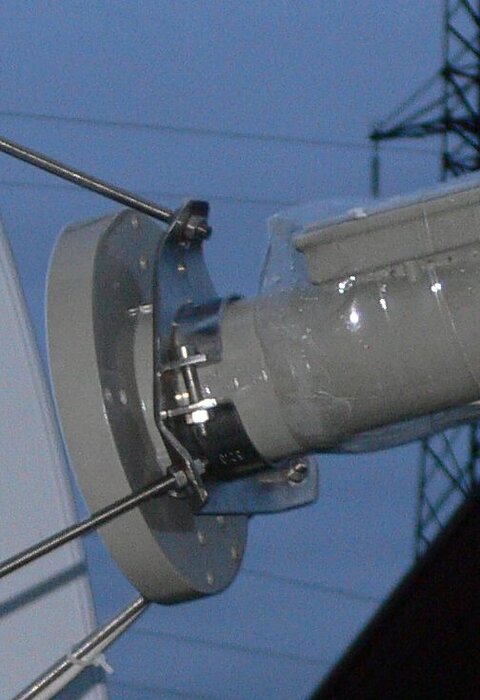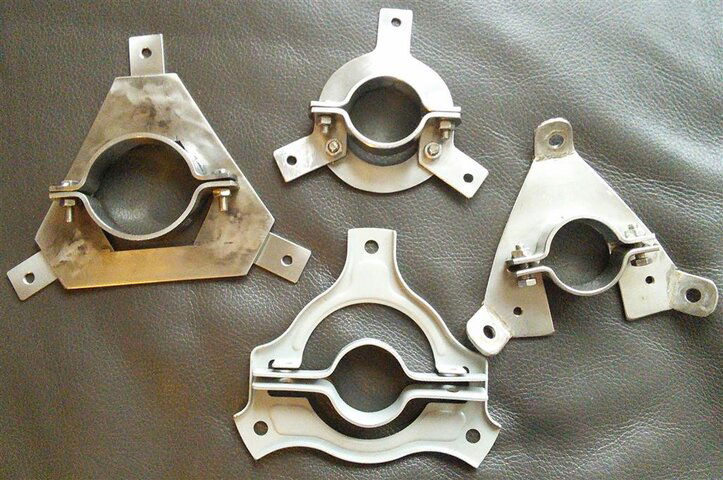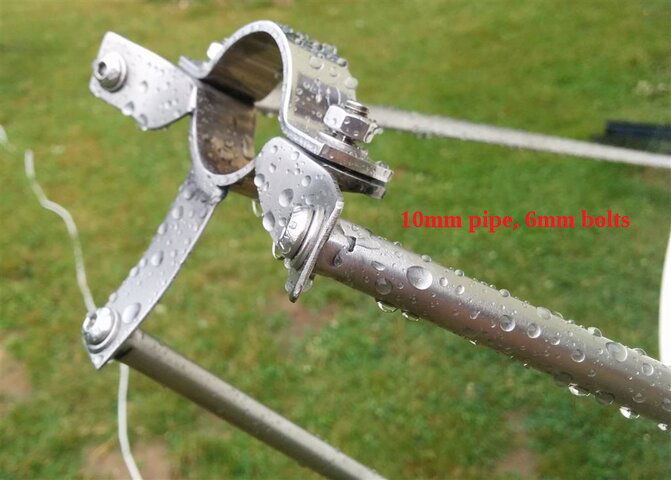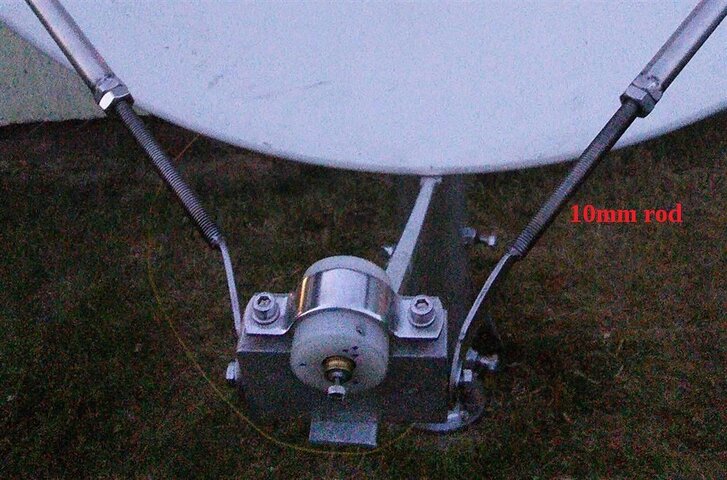Hi guys,
I'm working on some replacement "arms" to hold my scalar ring and LNBF on a 10 foot dish. The old arms are weak and rusting out badly.
Previously when I put the dish up, I simply assembled everything, and adjusted the LNBF in / out of the scalar ring, but I didn't pay attention to the f/D ratio because I didn't measure and calculate it. This time I'd like to do it a little better by measuring things and getting it right. I've measured the dish with a string test (fishing line works well), and come up with a f/D ratio of approximately 0.34 and a focal length of approximately 41 inches.
Knowing that the focal length is ~41 inches, where do I place the scalar ring, and the front lip of the LNBF?
From what I understand, the LNBF should tightened on to the scalar ring at the f/D ratio (0.34) first. From there, the front lip of the LNBF with scalar ring should be placed about 1/4 inch closer than the focal length, so 40.75 inches in my case. Once that's correct, I tighten the new "arms" to hold it all in place, adjusting the arms / scalar ring attachment points to get the focal length correct.
Does this make sense? Am I misunderstanding something?
sgs
I'm working on some replacement "arms" to hold my scalar ring and LNBF on a 10 foot dish. The old arms are weak and rusting out badly.
Previously when I put the dish up, I simply assembled everything, and adjusted the LNBF in / out of the scalar ring, but I didn't pay attention to the f/D ratio because I didn't measure and calculate it. This time I'd like to do it a little better by measuring things and getting it right. I've measured the dish with a string test (fishing line works well), and come up with a f/D ratio of approximately 0.34 and a focal length of approximately 41 inches.
Knowing that the focal length is ~41 inches, where do I place the scalar ring, and the front lip of the LNBF?
From what I understand, the LNBF should tightened on to the scalar ring at the f/D ratio (0.34) first. From there, the front lip of the LNBF with scalar ring should be placed about 1/4 inch closer than the focal length, so 40.75 inches in my case. Once that's correct, I tighten the new "arms" to hold it all in place, adjusting the arms / scalar ring attachment points to get the focal length correct.
Does this make sense? Am I misunderstanding something?
sgs











